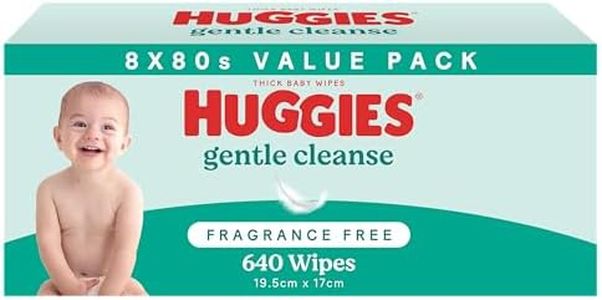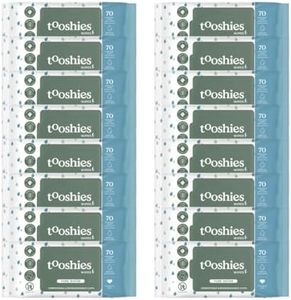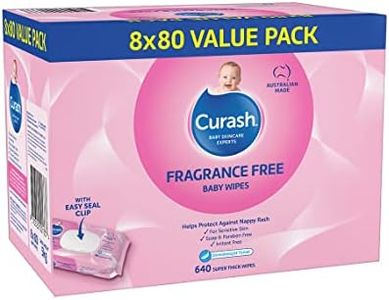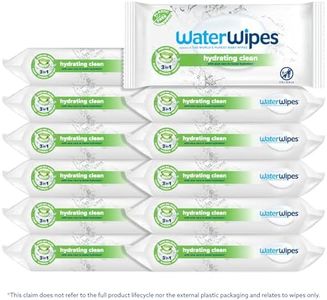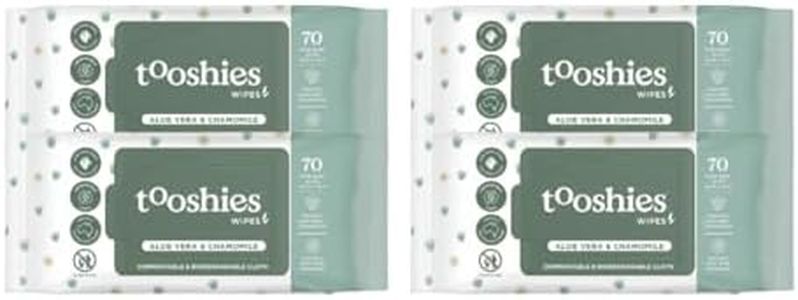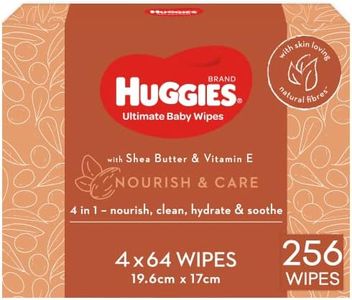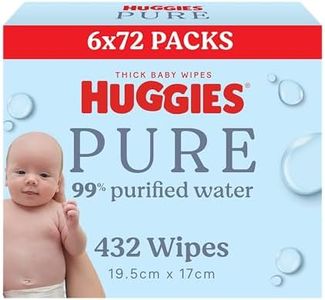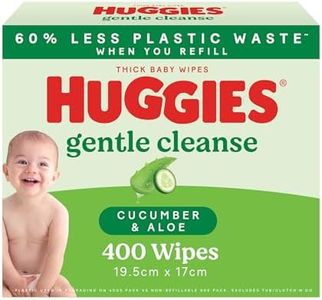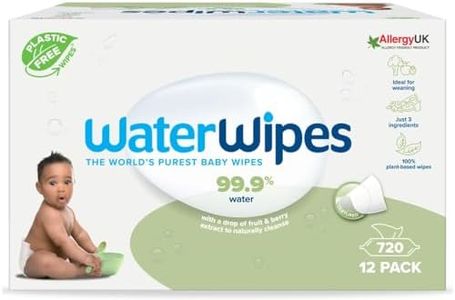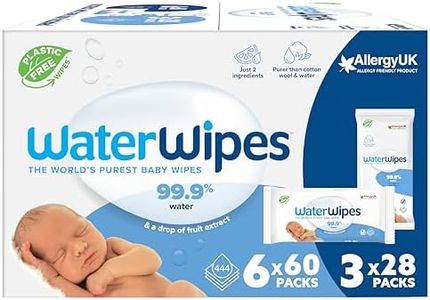We Use CookiesWe use cookies to enhance the security, performance,
functionality and for analytical and promotional activities. By continuing to browse this site you
are agreeing to our privacy policy
10 Best Baby Wipes
From leading brands and best sellers available on the web.By clicking on a link to a third party's website, log data is shared with that third party.
Buying Guide for the Best Baby Wipes
Selecting the right baby wipes can make a big difference in your baby's comfort and skin health. The market offers many options, and it's important to consider your child's skin sensitivity, your convenience, and where you plan to use the wipes. By understanding the key features and tailoring your choice to your family's lifestyle and needs, you can find the best fit for daily diaper changes, cleanups, and even travel.MaterialThe material of baby wipes affects how gentle and effective they are on your baby's skin. Most wipes are made from either cotton, a cotton blend, or synthetic fibers. Soft, thick materials feel more comfortable and do a better job cleaning, while thinner wipes may require using more per change. If your baby has sensitive skin, it's best to opt for natural or hypoallergenic materials. Consider where you'll use the wipes: thick, cloth-like wipes for home and thinner ones for on-the-go.
IngredientsIngredients listed on baby wipes indicate what goes onto your baby's skin, including any cleansers, moisturizers, or fragrances. Wipes with fewer and more natural ingredients are less likely to cause irritation or allergic reactions. Avoid wipes with alcohol, parabens, or synthetic fragrances if your child has sensitive skin. If your baby has no known sensitivities, you may decide based on preference for scent or added soothing agents like aloe.
ScentBaby wipes are available both unscented and with added fragrances. Scented wipes can help mask odors and offer a fresh feel, but they may irritate sensitive skin or cause allergies. Unscented wipes are the safest bet for newborns or babies with skin problems. If you or your baby are sensitive to smells or prone to allergies, stick with fragrance-free options.
Thickness and TextureThe thickness and texture of a wipe determine how well it cleans and how comfortable it is to use. Thicker wipes are sturdier and often require fewer per diaper change, making them practical for messy situations. Some wipes have textured patterns, making them more effective at cleaning. If you want to save time and effort, choose thicker and textured wipes; for light cleanups or quick refreshes, thinner wipes can suffice.
Moisture LevelA wipe's moisture level affects how easily it slides over the skin and lifts away mess. Well-moistened wipes are more effective and less likely to cause friction or irritation. Too dry wipes may be rough, while overly wet ones can feel too soggy or drip. For diaper duty, aim for adequately damp wipes; for quick hand or surface cleaning, slightly drier wipes may be OK.
PackagingPackaging plays a role in convenience and keeping wipes fresh. Some wipes come in resealable soft packs, while others are in hard canisters or tubs. Resealable packs are light and easy for on-the-go, but can lose moisture if not closed properly. Tubs are better for home use and tend to keep wipes moist for longer. Consider your main use—travel or home—and how often you need to grab just one wipe at a time.
Biodegradability and Eco-FriendlinessIf environmental impact matters to you, check if the baby wipes are biodegradable or made from sustainably sourced materials. Traditional wipes may contain plastics that take a long time to break down. Biodegradable wipes decompose faster and are better for the planet, but may be more expensive or less available. Choose these if you want to reduce your ecological footprint, especially if you use a lot of wipes daily.
